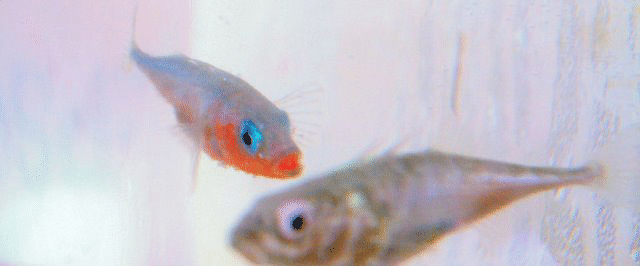Eutrophication induced change in parasite communities: ecological pathways and evolutionary consequnces
The environment of the Baltic Sea is currently changing due to eutrophication and increased growth of algae and phytoplankton. Monitoring of threespine stickleback populations (Gasterosteus aculeatus) in the archipelago of Southern Finland has revealed that sticklebacks breeding in eutrophied coastal waters are less parasitized than sticklebacks breeding in clear waters, particularly when it comes to the dominating parasite Schistocephalus solidus (Tuomainen, Sylvin & Candolin, unpublished data). This goes against the common belief of populations in human disturbed areas being in poorer condition than populations in undisturbed areas. There are two non-mutual explanations for the observed correlation between health and environmental conditions: a) differences in exposure to pathogens, b) differences in resistance to pathogens, which can have both a genetic and an environmental component. The first scenario could arise if the host has adjusted better than the pathogens to eutrophied conditions, resulting in a relatively pathogen free environment, while the second scenario could arise if the pathogens are less virulent (or hosts more resistant) in eutrophied areas, due to hosts leading the host-pathogen co-evolution.
In the current project, we expand the monitoring of Baltic Sea stickleback populations to increase our knowledge on the dependence of host-pathogen interactions on the degree of human induced eutrophication. We relate the findings to knowledge on the abundance, life-history and environmental requirements of the pathogen species to evaluate the possible causes of the pattern (changed exposure or resistance). To reveal the causes, we carry out experimental work. Recent research carried out in our research group shows that threespine sticklebacks show great phenotypic plasticity and can easily adjust to different water conditions (Candolin et al 2008, Candolin 2009). It is, hence, possible, that the better health of sticklebacks in eutrophied waters is due to the pathogens not yet having adapted to the altered conditions.
Objectives
a) Determine the correlations between eutrophication and pathogenic infections in threespine stickleback populations in the Baltic Sea.
b) Experimentally investigate the causes of the correlations for different pathogens.
